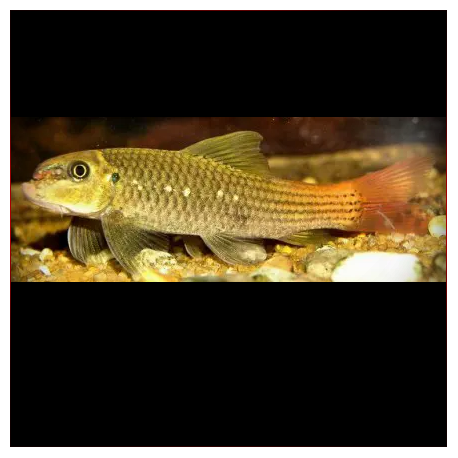More info
Datasheet
| Maximum Size | 18.5cm / 7.28inches |
General Description
Garra Rotundinasus, previously misidentified as G. gravleyi, possesses distinctive features such as a weakly-developed proboscis on the snout and a truncated region anterior to the nostrils. It can be discerned from G. gravleyi by unique characteristics including lateral line scales, scales above the lateral line, predorsal scales, snout shape, and coloration patterns. The genus Garra, where G. rotundinasus belongs, is continuously evolving with new taxa being described regularly, leading to a complex taxonomy.
Aquarium Setup
The ideal aquarium setup for Garra Rotundinasus should replicate its natural habitat in flowing water. A gravel substrate, rocks, and driftwood can be added to mimic its native environment. Plants that can thrive in flowing water, such as Java Fern or Anubias, can also be included. Maintaining water quality is crucial, with a recommended pH of 6.5-7.5, temperature between 22-26°C, and moderate lighting. For further details, refer to the table provided.
Behaviour
Garra Rotundinasus, like other members of the genus, possesses a modified lower lip that forms a mental adhesive disc allowing it to cling to surfaces in turbulent conditions. These fish are known for their feeding behavior, using their keratinized mouthparts to scrape food items from the substrate. Some species within the genus have specialized adaptations, such as reduced eyes in hypogean forms and the ability to thrive in extreme environments like thermal springs.
Feeding and Diet
Garra Rotundinasus, similar to other Garraina members, primarily feeds on food items scraped from the substrate. Their diet typically consists of algae, small invertebrates, and organic detritus. In an aquarium setting, they can be fed a balanced diet of sinking pellets, algae wafers, and occasional live or frozen foods like bloodworms or brine shrimp to meet their nutritional requirements.
Reproduction & Dimorphism
Details on the reproductive behavior and dimorphic characteristics of Garra Rotundinasus are limited. Like many Garra species, they are likely to exhibit typical cyprinid breeding behavior, with spawning occurring in suitable conditions. Dimorphism in these fish may include differences in body size, coloration, or fin morphology between males and females, aiding in reproductive strategies.
Habitat and Distribution
This species is native to the Yiluowadi Jiang in the upper Irrawaddy river system, located in Yunnan province, southern China. Its distribution is limited to this specific region, with the type locality being the Daying Jiang in Tengchong, Yiluowadi Jiang. Garra Rotundinasus shares its habitat with other fish species like Garra bispinosa, Devario apogon, and Channa gachua. Additionally, other Garra species endemic to the same area include G. qiaojiensis and G. tenchongensis.

